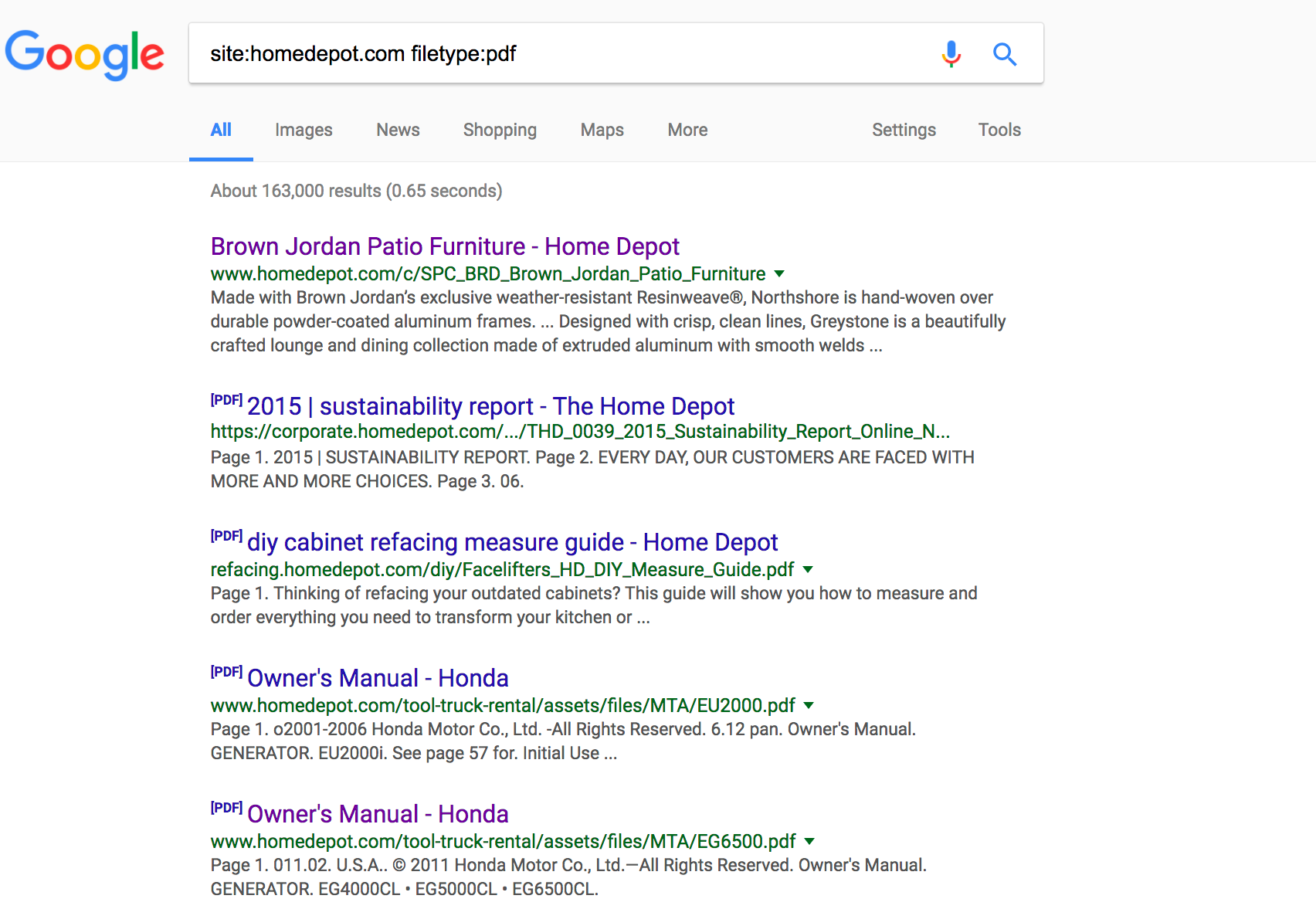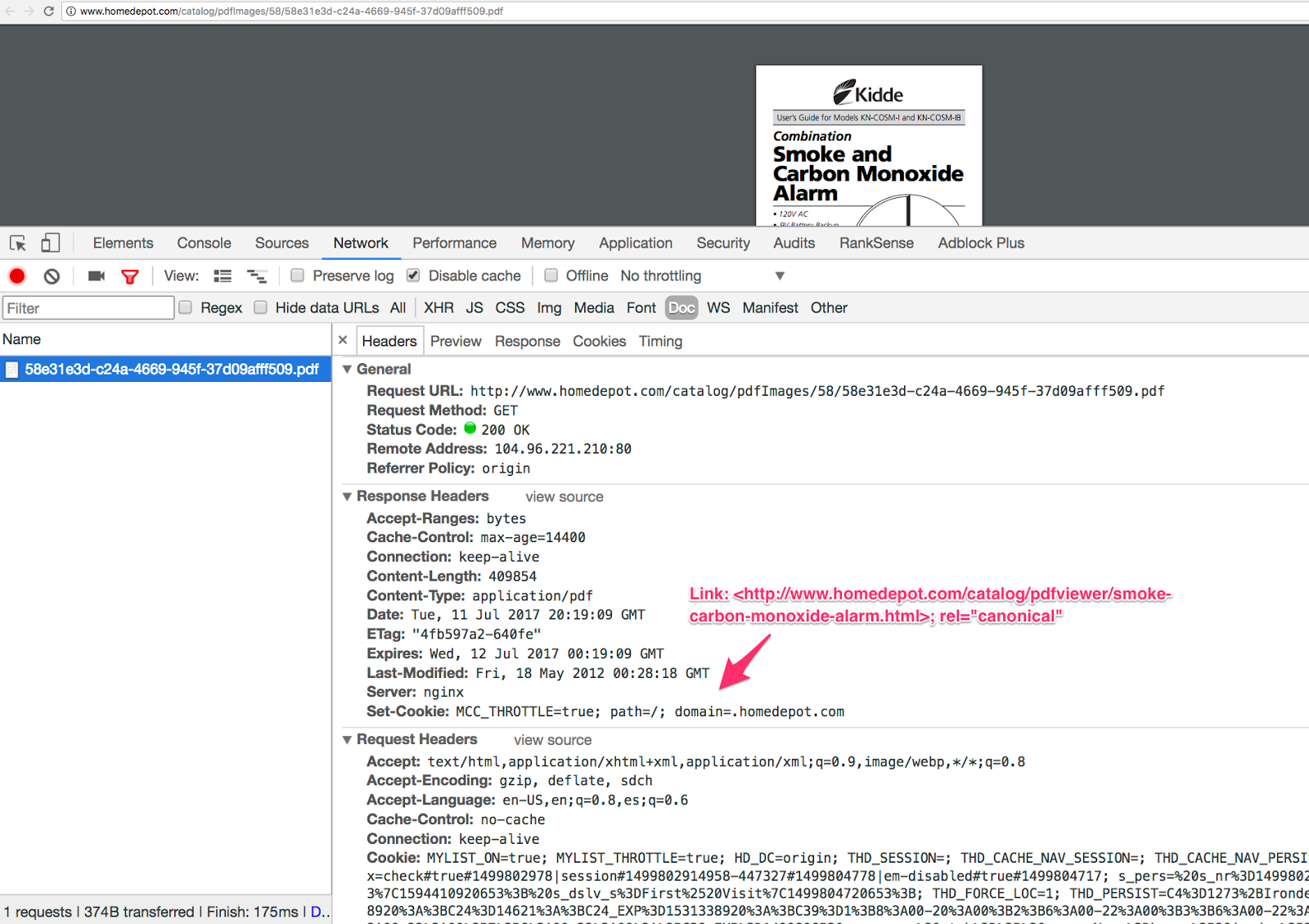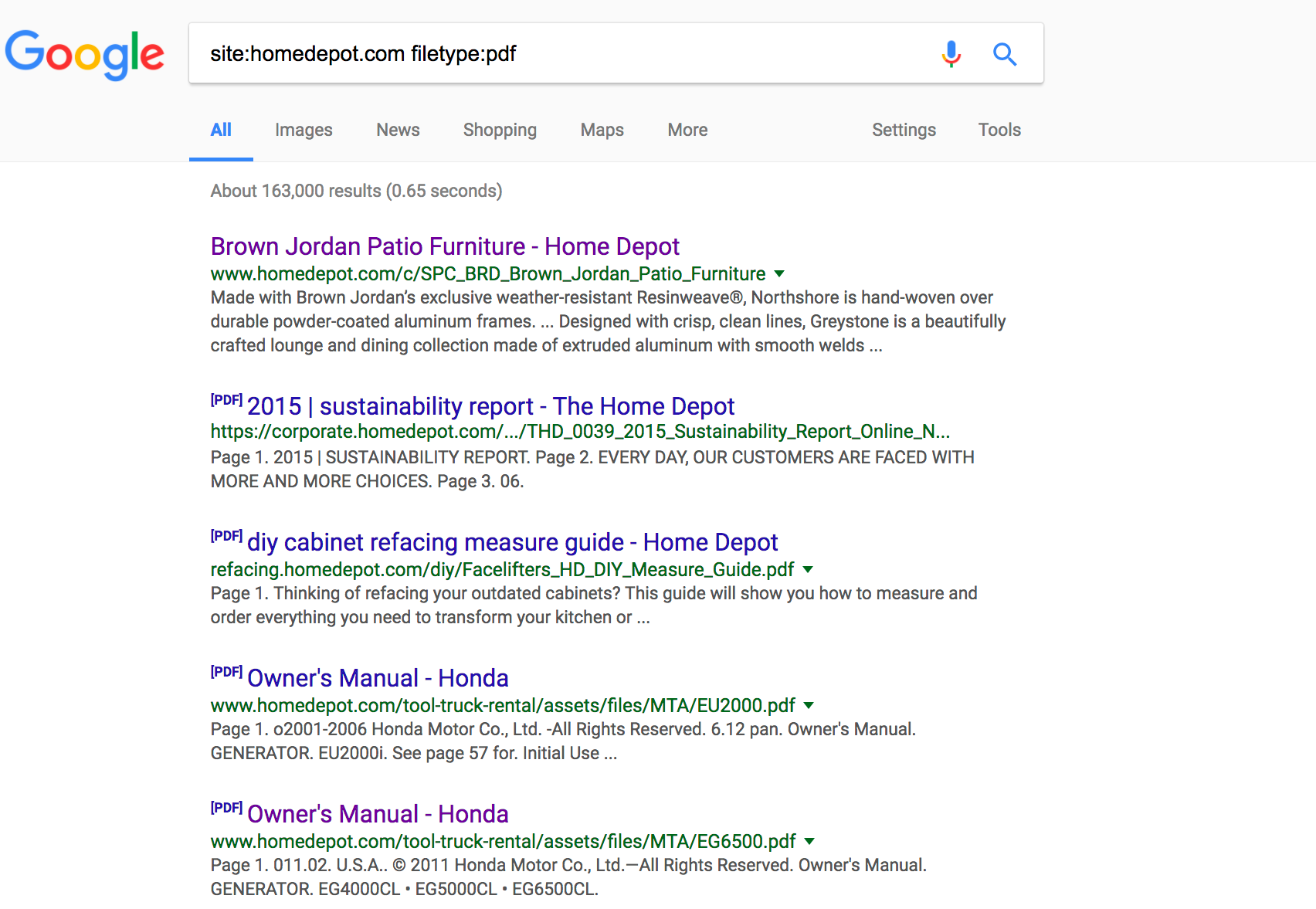In this post, I’ll address three valuable, and often overlooked, SEO opportunities for ecommerce sites: PDFs, store locators, and product images PDFs and PDF Viewers Many ecommerce sites host a decent number of PDFs. These PDFs accumulate valuable links like any other web page, and could help the SEO of the site if optimized correctly. The main advantage of a PDF viewer is that you can add your site navigation and analytics tags, and enable users (and search engines) to follow links and navigate your site. Make sure your vendor supports cross-domain HTTP canonical headers so you can get the SEO value out of your PDFs. I searched for “bed bath and beyond near me.” Google provided the closest store as listed by the store locator. Having Google My Business listings for each store should be enough to rank for navigational searches like these. For example, as noted above Bed Bath & Beyond is missing out on organic listings for “kitchenware near me.” Product Images Google image search represents as much as 10 percent of total search visitors to many ecommerce sites. Track image search visits in Google Search Console, under Search Traffic > Search Analytics, and select Search Type: Image. But, how valuable are image searches? It is important that all product images include the name of the product as ALT text.
There is more to search engine optimization than keywords, titles, meta descriptions, and H1s. In this post, I’ll address three valuable, and often overlooked, SEO opportunities for ecommerce sites: PDFs, store locators, and product images
PDFs and PDF Viewers
Many ecommerce sites host a decent number of PDFs. You might not think that there is SEO value in them, or even know where to start if you wanted to optimize them. But, you’d be wrong to ignore them. Let me show you.
PDF is the typical digital format for product information sheets, user manuals, and catalogs.
You can find how many PDFs Google has indexed for any site by searching with:
site:sitename.com filetype:pdf.

These PDFs accumulate valuable links like any other web page, and could help the SEO of the site if optimized correctly.
For example, a PDF guide from Home Depot for a smoke and carbon monoxide alarm has eight backlinks, according to Ahrefs, a backlink checking tool.
Sadly, like most PDFs, it doesn’t have any links back to the site. The backlinks help the PDF get indexed and ranked, but they don’t benefit the rest of the site. When users find the guide in the search results, those visits won’t be tracked in analytics. There won’t be a way for them to navigate to the rest of the site and potentially order other products.
The best way to optimize the PDFs to benefit overall site traffic is to use an HTTP canonical header and choose one of two options:
- If the PDF is a duplicate of information already available on the site, for example a product information sheet, set the PDF’s HTTP header canonical to the page that it is duplicating.
- If the PDF has no HTML equivalent, add a PDF viewer and canonicalize the page to it.
The choice of canonicalizing to a PDF viewer requires a bit more explanation.
The main advantage of a PDF viewer is that you can add your site navigation and analytics tags, and enable users (and search engines) to follow links and navigate your site. The HTTP header canonical effectively replaces the PDFs on the search results and replaces them with the canonical URLs.

ViewerJS is a popular open source JavaScript-based PDF viewer. Some sites host their PDFs and media files with third party vendors like Scene 7 and Endeca.
Make sure your vendor supports cross-domain HTTP canonical headers so you can get the SEO value out of your PDFs. Scene7 explains this in, ironically, a PDF. It addresses adding canonicals to images, which Google does not support, but the instructions apply to PDFs.
Store Locators
Store locators are another opportunity to drive nearby mobile users. But traveling around the country and pulling out your phone to see if the store locator is working correctly is very unpractical (and expensive). Fortunately, you can use Google Chrome’s powerful emulation features, to virtually travel anywhere in the world.
Let me explain the steps to use this fascinating feature.
First, I’ll review the store locator from a mobile user’s point of view, and then also check if the stores are ranking high in Google Maps.

COMMENTS